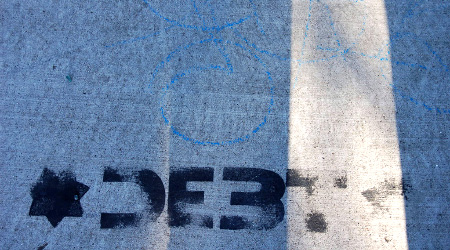How To Lower Your Debt

Debt isn't necessarily a bad thing and like most aspects of life, moderation is the solution. Most consumers aren't able to pay cash for a house or a vehicle. It is also unlikely that they can fully fund a college education or start a new business with the money in their bank account. The key to lowering your debt is knowing where your money is going in relation to how much money you have coming in and then make smart financial decisions accordingly. Hopefully this general overview of how to lower your debt can get you started on the road to financial stability.
Debt Reduction Overview
Many consumers get overwhelmed with excessive debt and it is hard for them to see the forest for the trees. This is because there is so much debt from so many creditors that it becomes impossible to tackle. They know they need to start getting it under control but they don't know where or how to begin. Either with a notepad or spreadsheet make two columns labeled income and expenses. Now simply list every single financial aspect of your life that falls under either of these two categories. This may include fancy coffee in the morning as an expense or doing odd jobs on the side for some extra income.
The Benefits of a Budget
Once you know what is coming in and what is going out you can take everything you've written and begin your prioritization. It might actually be difficult to create a budget for some individuals because their priorities may be skewed. How many times have you heard a friend or family member say they can't live without such and such. That's why there is a difference between a want and a need. Take the expenses column and list next to every item a number from 1 to 5 in order of priority. 1s will be the most important and 5s will be the least important.
The only way some will be able to successfully lower their debt is if they spend less in expenses than they take in as income. After prioritizing all expenses create a third column labeled priorities and re-list every item grouped by its importance. Needless to say, priorities with a 4 or 5 are probably going to have to be eliminated. Many families can see an immediate reduction in monthly expenses of 20% to 30% simply by eliminating wasteful spending. This frees up additional financial resources to lower debt.
Consolidate Outstanding Debt
Now that expenditures are under control you can focus your attention on debt elimination through consolidation. It is not unheard of for consumers to have $10,000 or more spread across half a dozen credit cards. Credit card debt is normally the overriding factor in what drives consumers to bankruptcy. Even though student loans and mortgages can have large debt loads, terms can usually be renegotiated or a forbearance implemented to provide breathing room.
Credit cards on the other hand often implement punitive universal default interest rates and excessive late and overbalance fees which makes matters worse for consumers. If you own your home you can use a home equity line of credit to consolidate excessive credit card debt. By moving your debt to a lower interest rate loan you can pay the balance down faster. If you have a credit card not in use you can use balance transfers to consolidate high interest rate credit cards down to a lower interest rate card for 6 to 12 months. Ideally once you are paying a lower interest rate your monthly payment will mostly apply to the principle which will help lower your total debt.
Summary
There are many techniques to how to lower your debt but they all revolve around saving more and spending less. It really is that simple if you want to lower your debt. The only thing typically holding back consumers is the lack of will power and dedication to make it happen. If you set your mind to it, eliminate wasteful spending and focus on what's important you will be debt free in no time. At that point you can focus on the important things in life such as family and friends and planning for the future.
Elsewhere on StockMonkeys.com







